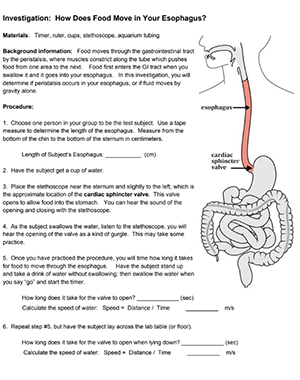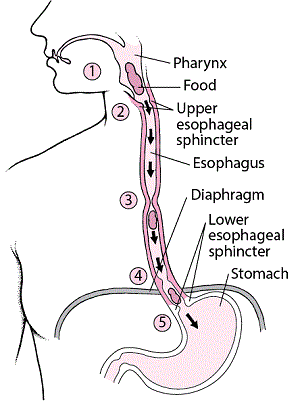
This activity was designed for high school anatomy students, though it could easily be used in biology or even elementary school classes. The goal is for students to determine if water moves down the esophagus by gravity or by the action of the muscles, peristalsis.
First, students measure the length of the esophagus with ruler or a tape measure by measuring from the chin to the bottom of the sternum. A subject then swallows water while another student listens to the stomach with a stethoscope.
The opening and closing of the cardiac sphincter valve will indicate how long it took for the water to travel the length of the esophagus. Students will repeat this procedure while subject is laying on his back.
Finally, as a demonstration, the instructor shows water moving by gravity down aquarium tube. In each case, the speed of the movement is measured in cm/s. You should set this up ahead of time with a ring stand and funnel. It’s a great way to visualize how water moves down a static tube from gravity alone. Water moving in the esophagus moves much slower as the muscles push water down to the stomach.

Many students will start with the idea that liquid (and food) moves into the stomach just from gravity. Another way to tackle this misconception is to ask students if they could swallow while laying down.
Most will claim loudly that they can! How does that work then? Wouldn’t the liquid just pool in the tube until you stand up. Do you think you could swallow water while standing on your head?
Side note: I once had a student test this by doing a handstand and swallowing water. Do not recommend! It’s a good way to choke, but it is possible.
Analysis section asks students to make a claim about whether gravity or peristalsis has a greater affect on the movement of water and then provide evidence and reasoning for their answer. (CER format)
Grade Level: 9-12
Time Required: 20-30 minutes

